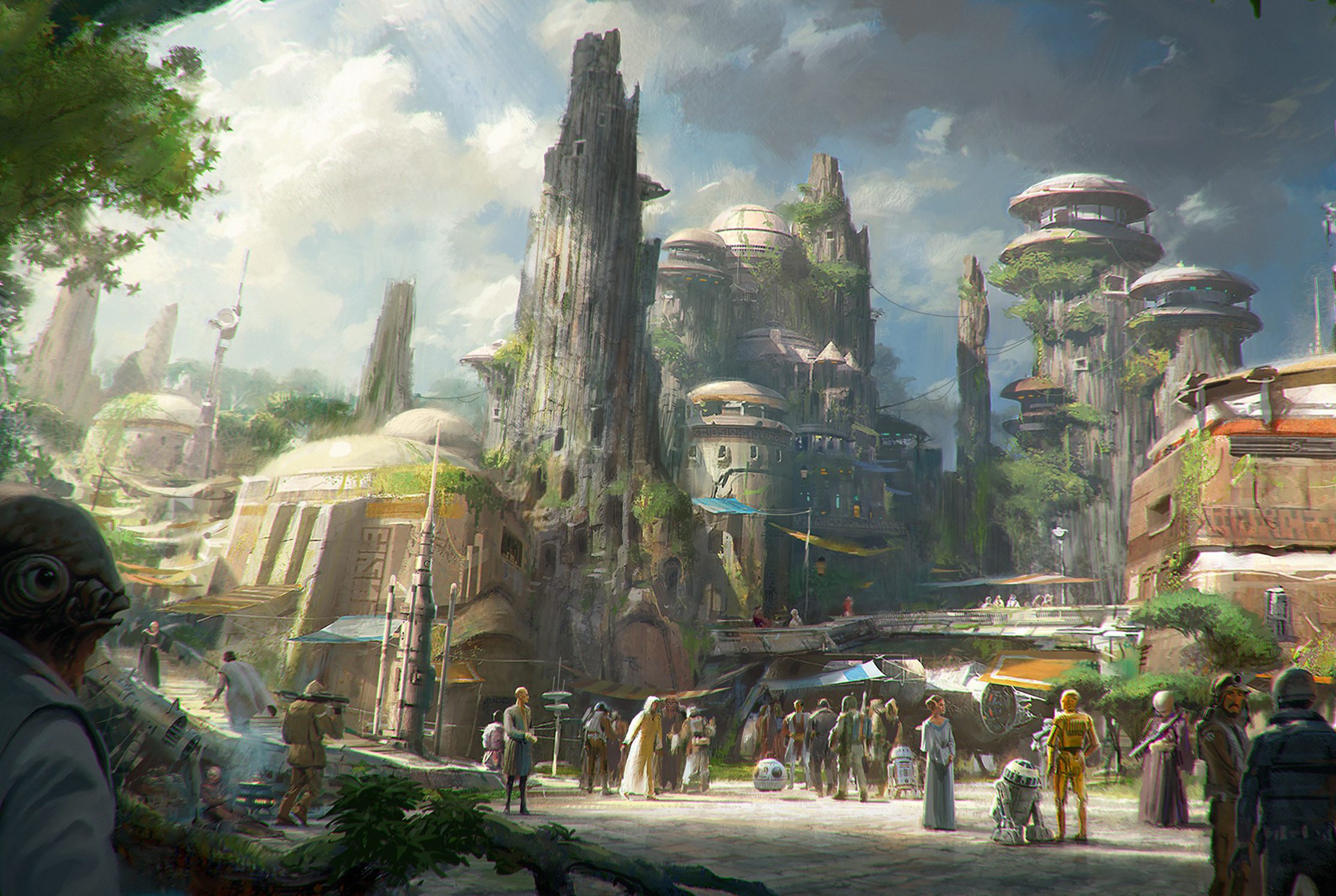Why Star Wars Is Better at Urban Planning Than Real Planners

On one of its many plot meanders, the main cast of Star Wars Episode IX: The Rise of Skywalker visit a planet called Kijimi. As is typical in Star Wars, the planet is represented by a single place on it, and in this case, a hilly, snowy city of houses and workshops built on top of each other. The characters sneak through alleys and walk to their destination from where they left their spaceship. Much of the action in the scenes set on Kijimi ultimately take place in narrow streets or a sort of town square. Notably, there’s no vehicular traffic.
In fact, many places in the Star Wars films are portrayed as walkable and not overwhelmed with cars. This is despite the fact that George Lucas is, or at least was, something of a gearhead and once contemplated a career as a racing driver. Coruscant, the ecumenopolis capital of the Galaxy in the prequel films, is the only planet with a lot of vehicular traffic. This is despite the fact that ground-level transportation (“speeders”) are common enough that even on a backwater planet like Tattooine (in the original film) get new models regularly enough that Luke Skywalker can complain about the lack of demand for his used one.
The Star Trek franchise has numerous examples of walkable environments. The characters can always seem to get anywhere they need to on foot after beaming down to a new planet. A few scenes set on Earth, notably in the Star Trek: Voyager episode “Non Sequitur,” showed a 24th-century San Francisco with car-free streets and a futuristic BART metro system.
Science-fiction films are hardly the only movies with a surprising lack of traffic. The French Connection, set and filmed in 1970s New York even has a car chase through the eerily deserted streets of Manhattan. No Country for Old Men is set in Texas in 1980, but much of the action is on foot. In just about any contemporary movie, scenes are set when characters can stand and talk and move, indoors or outdoors, regardless of “realism.”
The reason is simple and instructive for urban planners: in general, good films are about characters interacting with each other in a way that can be seen and heard by other people. This is why all bars and restaurants in movies are much quieter than in real life—so the audience can hear the dialogue. Because films are about characters interacting, the places they interact in can contribute to or distract from the interaction and its impact on the audience. Sure, the hero and the villain can do all their interactions over the phone, but it will be less intense than in person. Similarly, having hero and villain meet in a square or on a street, where their encounter can be the focus, works much better than shouting at each other across a busy street. The constraints of a car similarly limit the sort of action that can take place in one.
As anyone who has watched a lot of Mystery Science Theater 3000 can say, bad directors often confuse dramatic action with “things happening,” and so a great many bad movies are padded out with long driving sequences. Some of the issues with setting scenes in cars were also memorably parodied in the Leslie Nielsen film Spy Hard, in which John Ales plays a character who drives all over Los Angeles while facing the back of the car so he can talk to Nielsen.
By building sets and shooting locations in such a way to emphasize humans, Hollywood is actually making places that are, or at least look, more humane to live in. This is what urban planners and traffic engineers don’t do. They let automobiles and infrastructure take center stage and push the humans to the periphery, or eliminate them altogether. Architectural renderings often understand this, by not including cars or showing buildings from implausible angles.
Perhaps this is the real meaning of “human scale”—a place where people and their doings take center stage in the hypothetical theater. The former New York Penn Station, despite its deficiencies, was much loved in the way it made people feel like they had actually arrived when their trains pulled in. People often want to be in a great place just for the sake of being there.
One might object that a city is not a theater and there is no audience, but that misses the point. The idea is to elevate the ordinary through good design and create places that are pleasing to the eye and soul. “Theatrical” ought not to be a dirty word. Instead, we should recognize that we citizens are performer and spectator in our Isherwood-esque ramblings through the streets.
We must recognize the truth: people are interesting, while parking lots, highways, and cars are not.
Certainly Hollywood has an advantage over urban planners. No director ever had to think about sewage or garbage removal for the characters in their films. The Starship Enterprise famously got along fine on its five-year mission without a bathroom. As real people we have to think about these things, but just because they’re necessary, they don’t have to be ugly or out of all reasonable proportion. City streets do not need to be eight lanes wide, and every building does not need a massive parking lot or surrounded by “green space” like a faux-country estate.
Maybe new real-estate developments should be theatrically storyboarded as well as architecturally rendered.
Matthew Robare is a freelance journalist based in Boston.